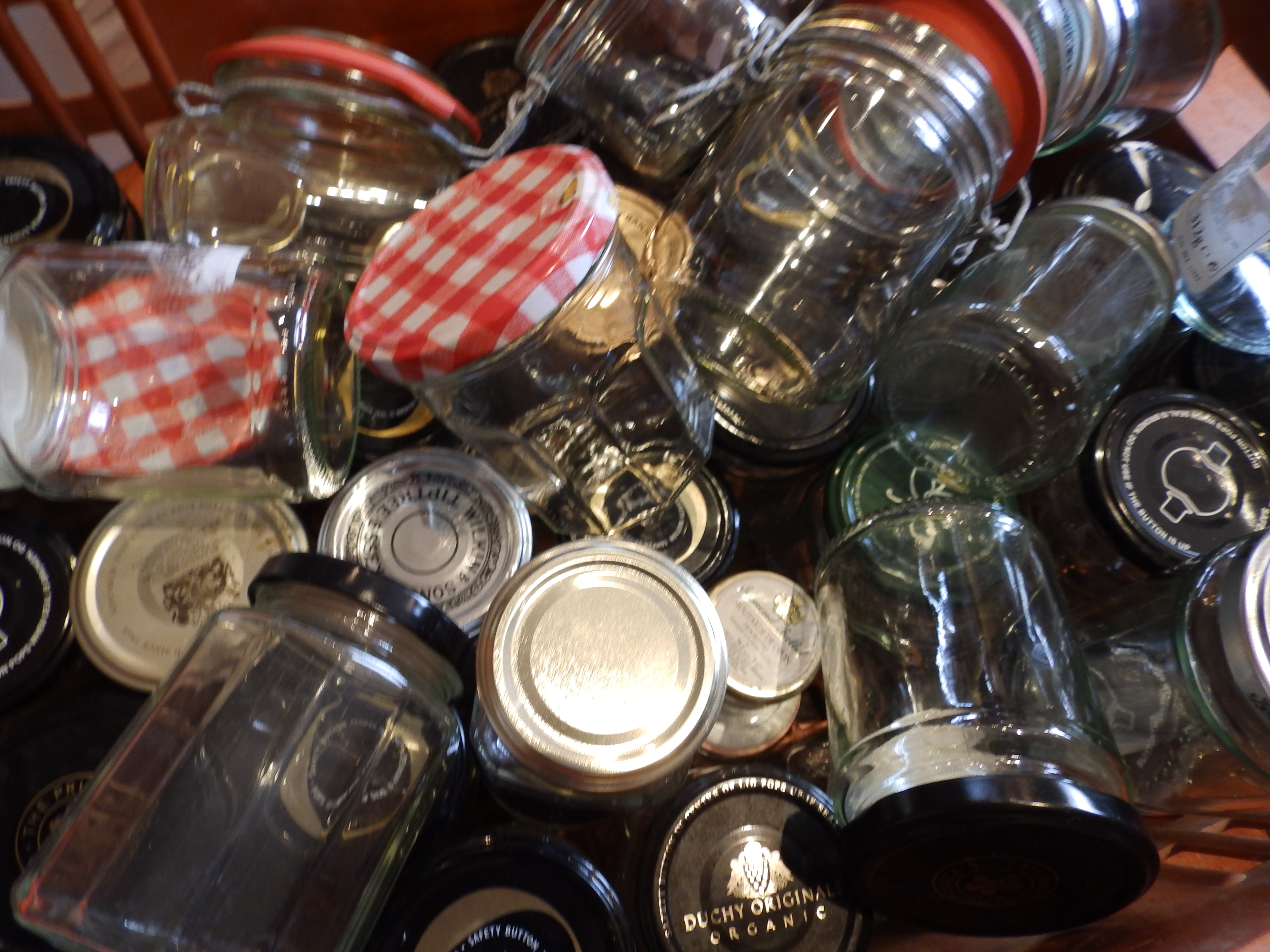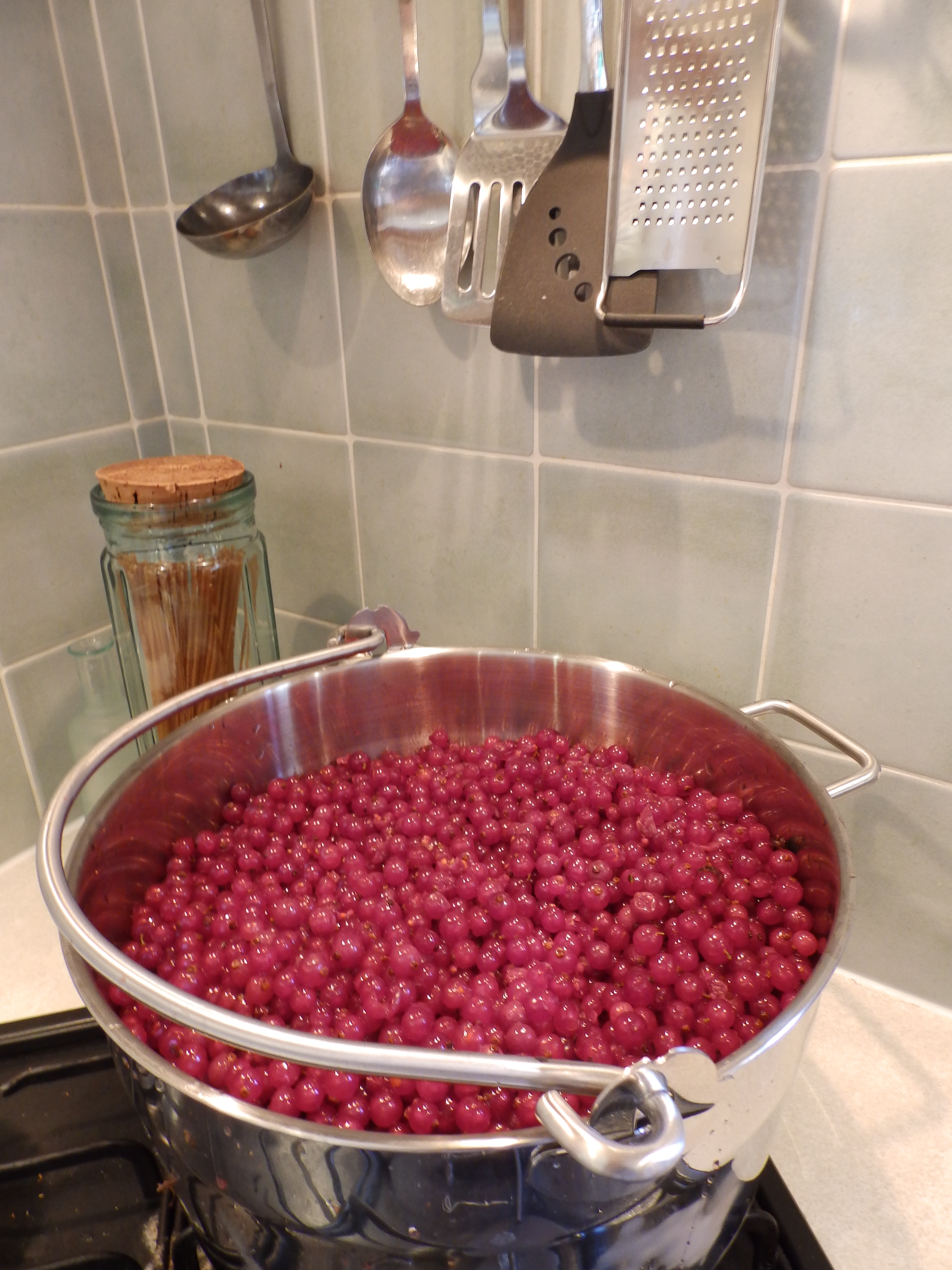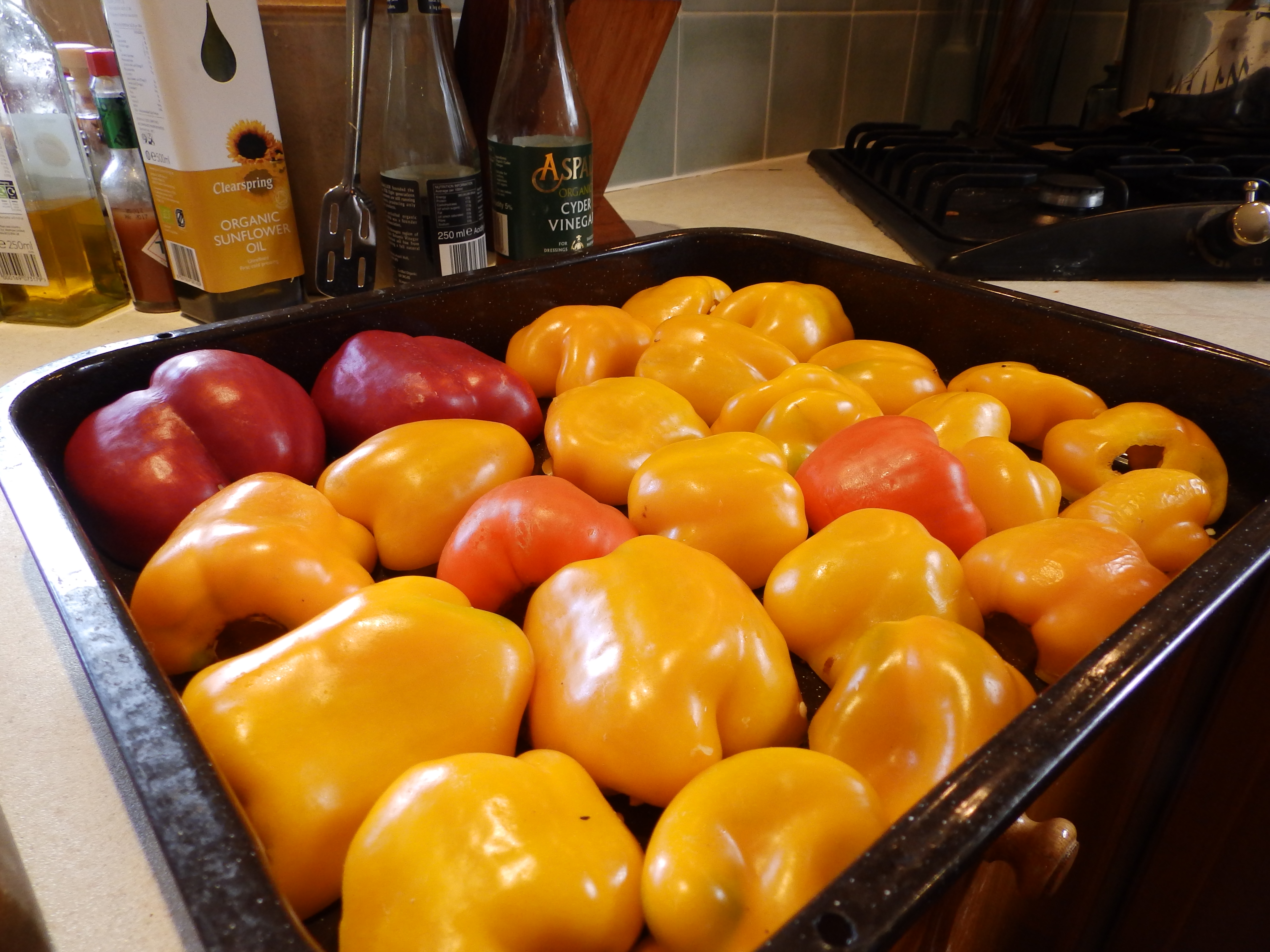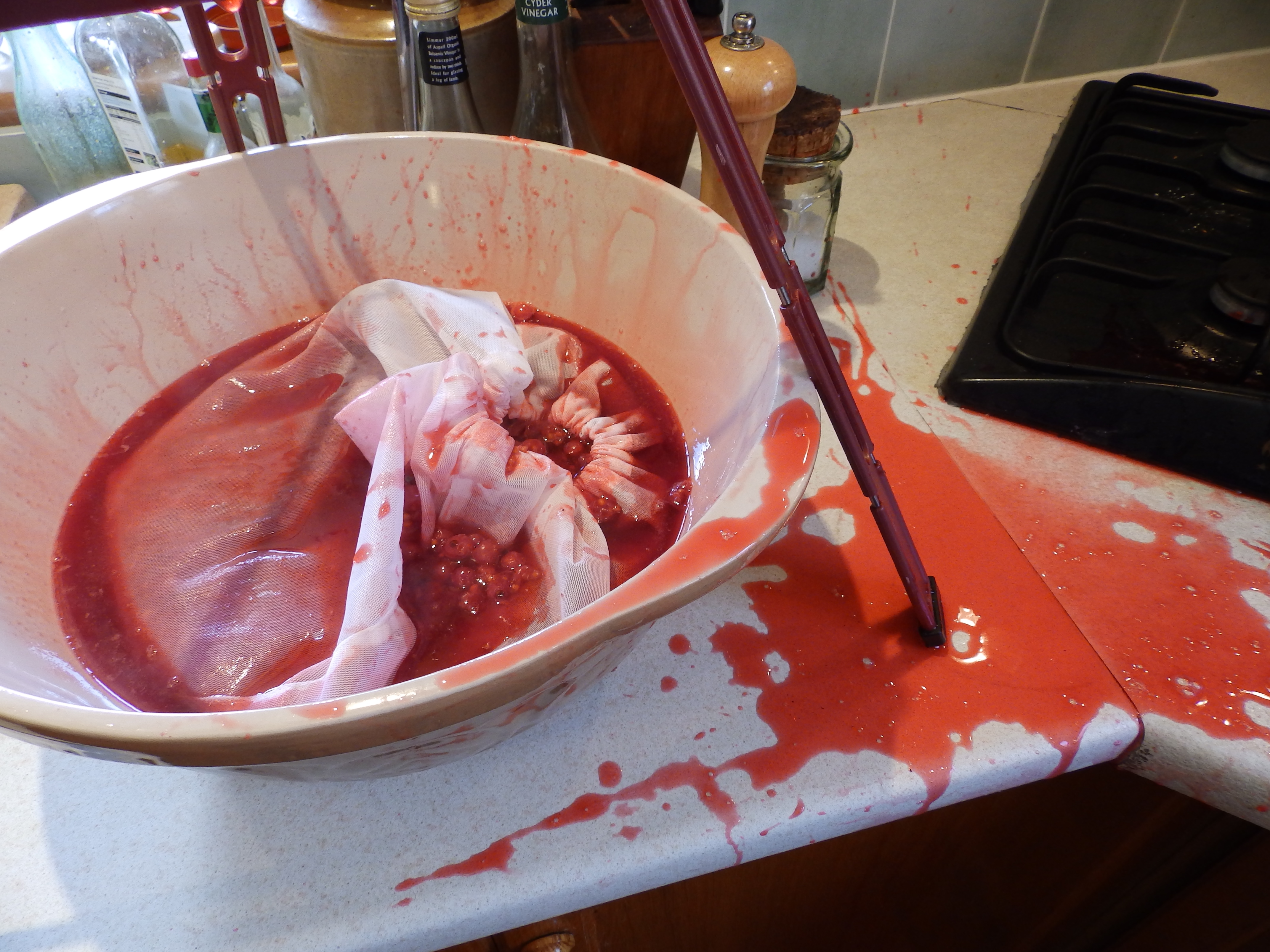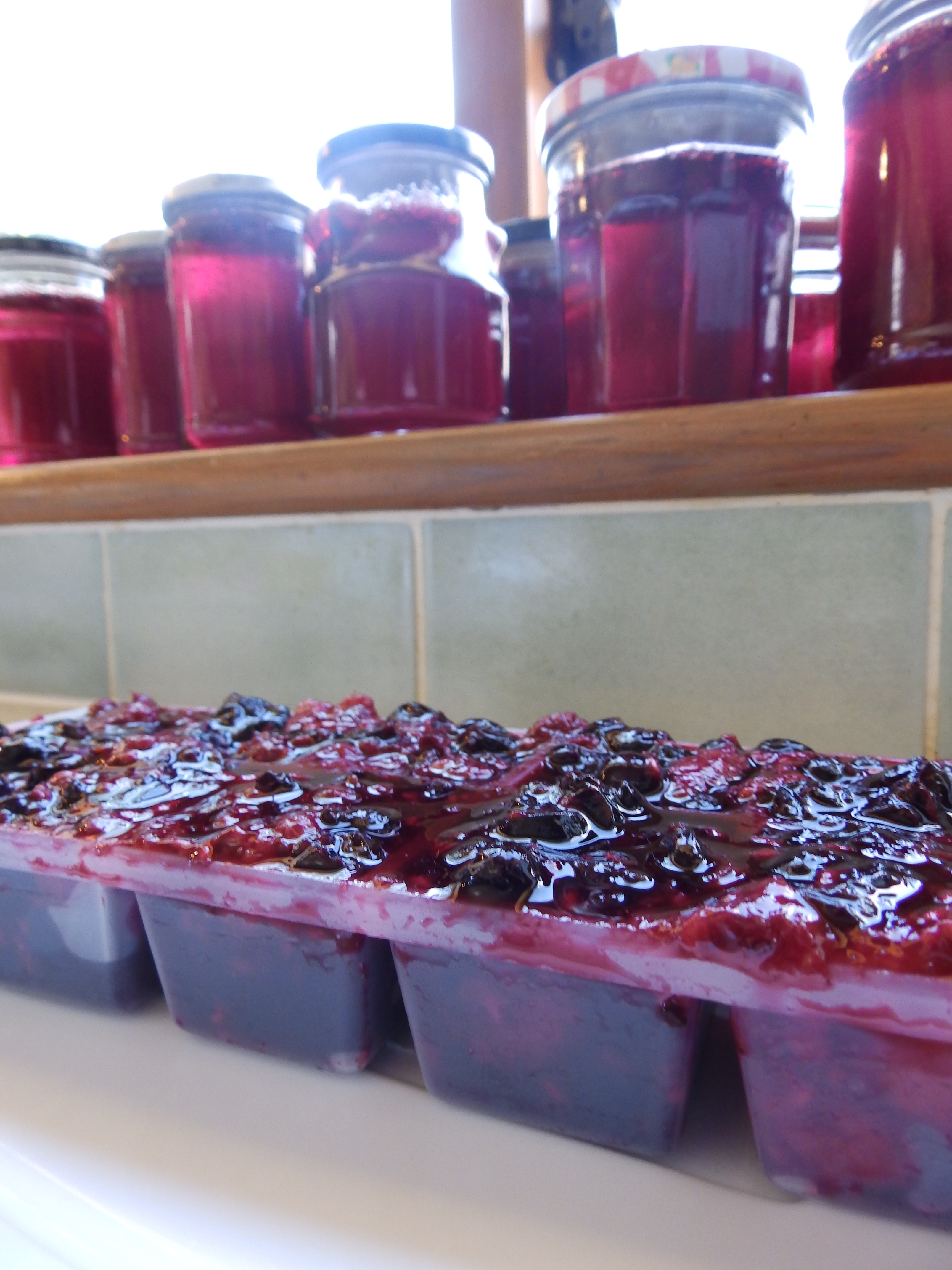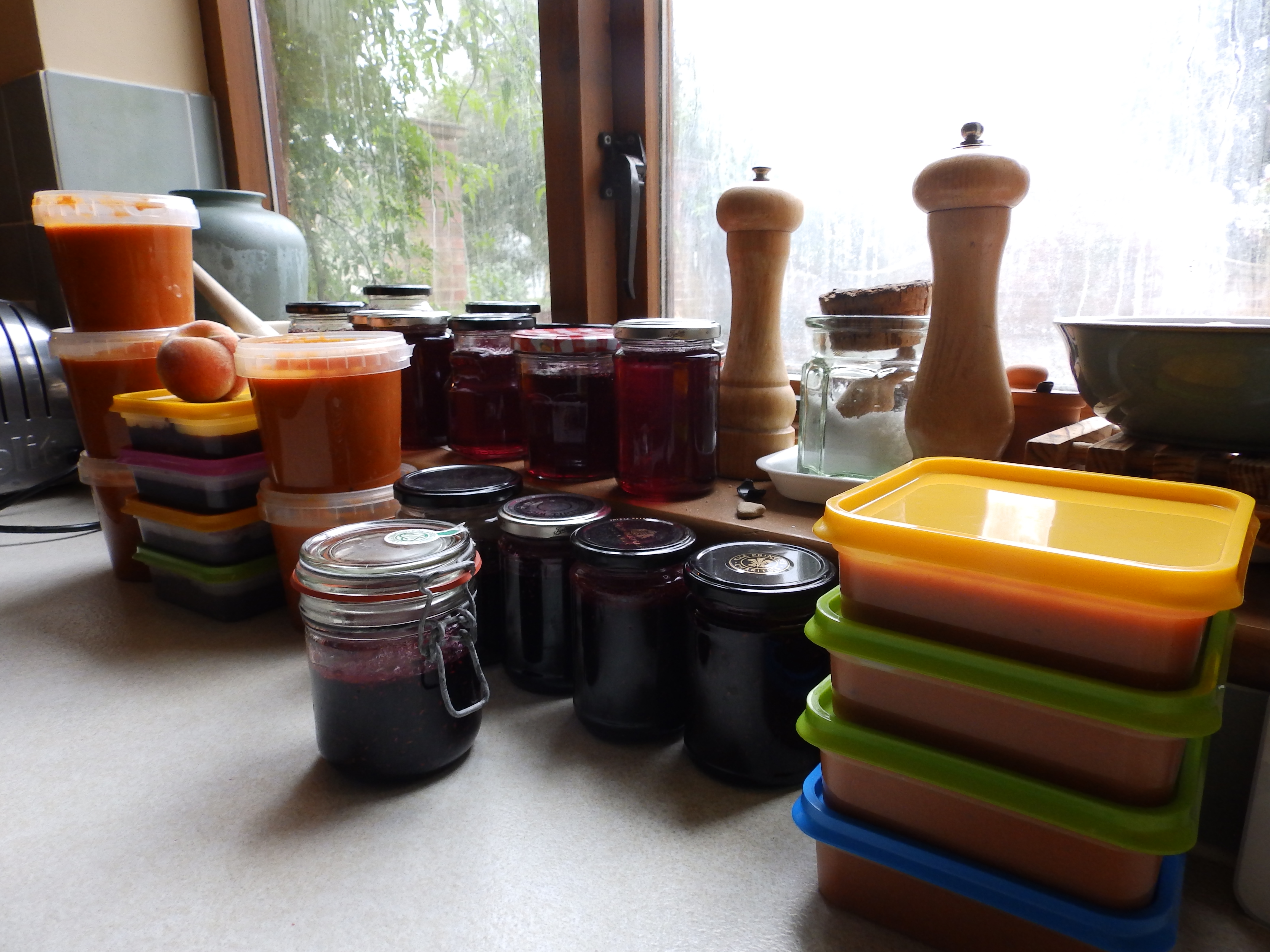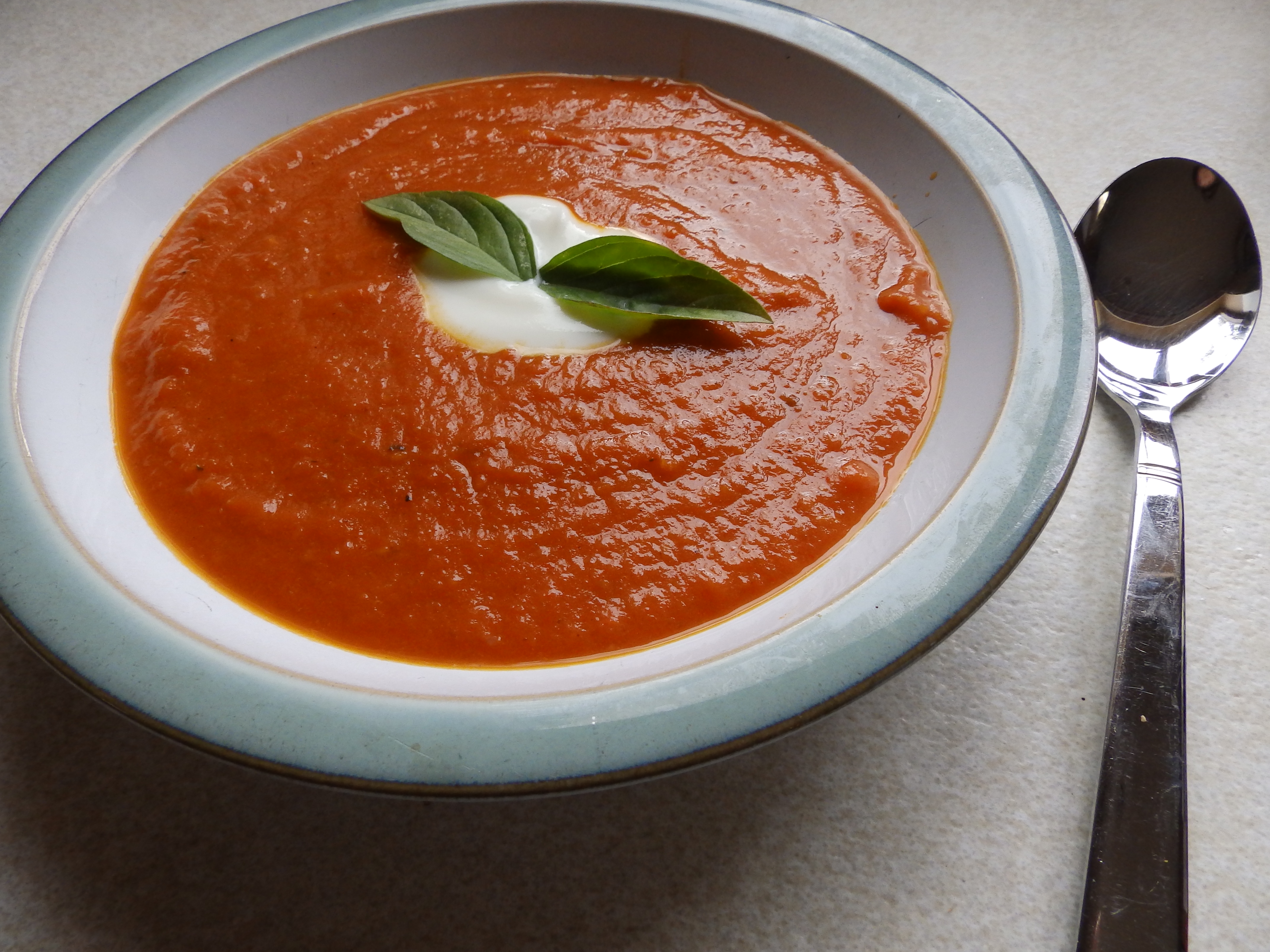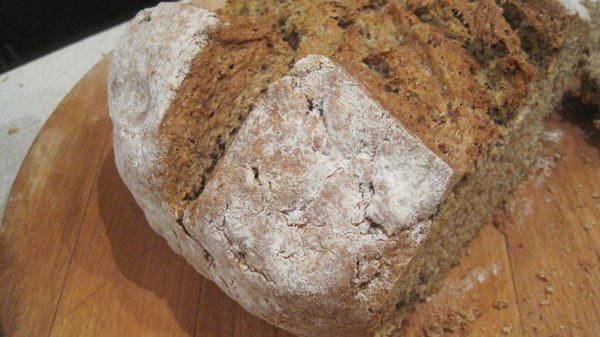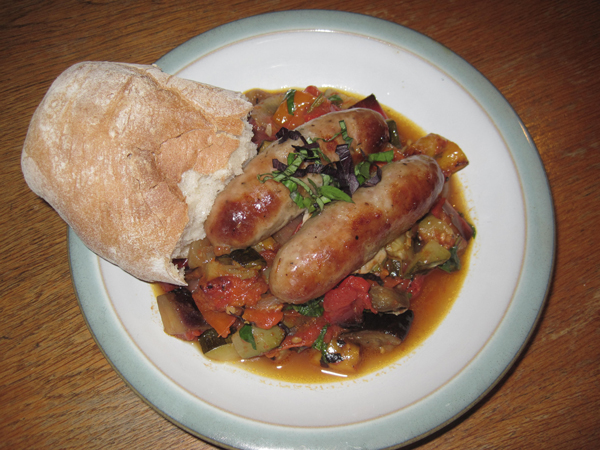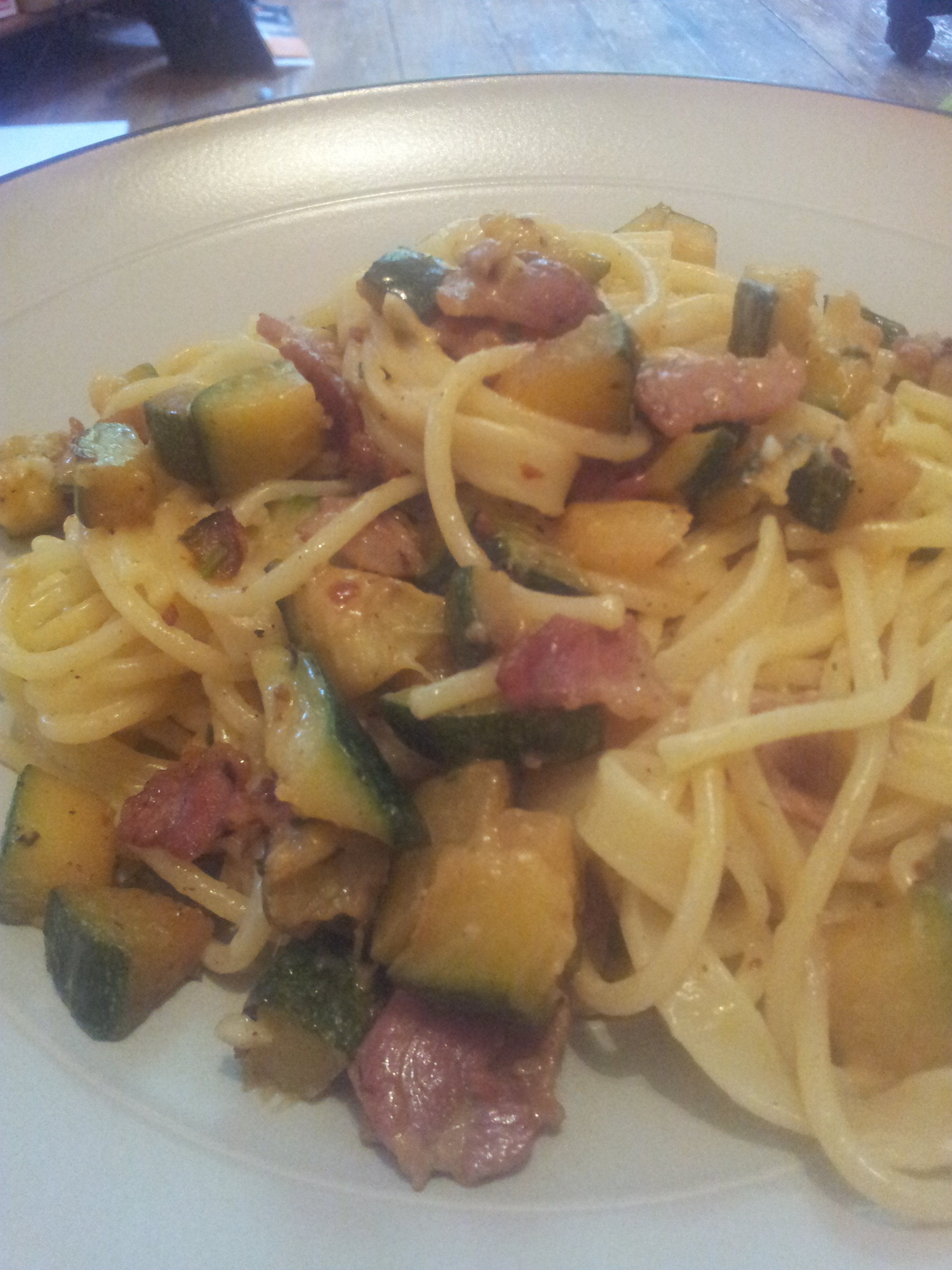What to do with the September gluts to make them last all the way through winter.
Returning home to bring in the harvest seems like an old-fashioned notion but in my family it is still very much the done thing. My dad is a little too gifted at growing for domestic uses given I was confronted with the following: a bucket of tomatoes, a bucket of peppers, a bucket of insect covered redcurrants and 2 pounds each of raspberries and blackcurrants.
Given the bucket of redcurrants I figured that redcurrant jelly was a must. The recipe I used is here (http://goo.gl/9bHlMf) however I would have to recommend against buying a Kilner jelly strainer if you are considering investing in one. It was poorly designed and resulted in something that looked like the vegetarian equivalent of the Texas chainsaw massacre. Definitely make sure your jelly bag is well secured before adding the redcurrants.
I decided to turn the raspberries and blackcurrants into both coulis and jam. The jam recipe can be found here (http://goo.gl/MNbWYE) and it was utterly delicious. If you haven’t made jam before or are nervous of it then I would recommend this jam as a good starting point. It sets relatively easily because of the high levels of pectin in the fruit. Also, my rule for jam is that I would rather have great tasting jam that is a little runny than some perfectly set jam that tastes vile because it is burnt. Runny jam doesn’t last so long but if it tastes good it won’t need to. We collect jars all year so we have some for jam making season but if you don’t it might be worth looking for some on www.freecycle.org or in pound shops before you splash out on expensive ones from a shop.
The coulis I made was simply a pound each of blackcurrants and raspberries plus 400g of sugar. This was just bought gently to the boil and then left it to cool. I then ladled it into containers for freezing. I also froze some in individual ice cube trays. These are the perfect size to drop into some plain yoghurt for a fruity treat. This also might be a good idea if you have young children and you want to get them eating healthier yoghurt with less sugar and additives.
With the buckets of tomatoes and peppers I made a delicious soup with the roasted peppers and tomatoes. The recipe can be found here (http://goo.gl/6Em55v ). I froze most of this huge batch of soup since it is nice, with winter fast approaching, to have some healthy, vitamin rich soup to tide you over, especially since tomatoes and peppers remind me so much of summer. Though gathering this amount of produce is hard work, it’s definitely well worth doing. It is satisfyingly thrifty and most of all delicious!
